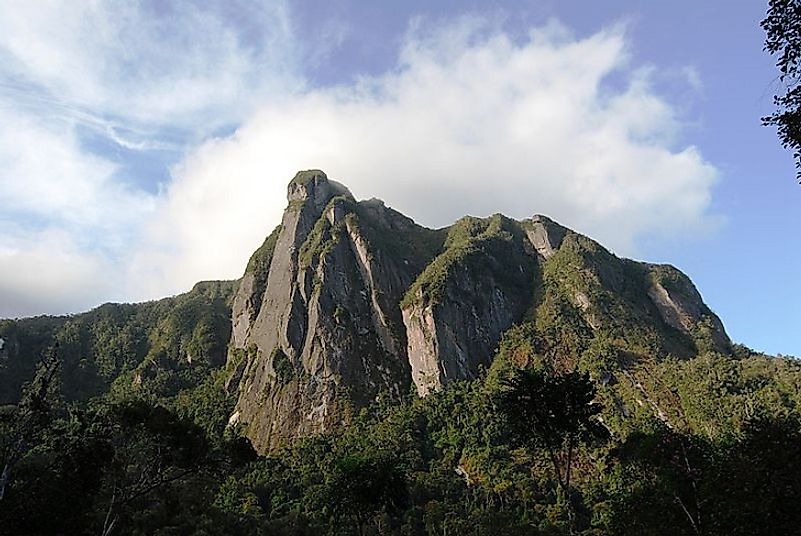Marojejy National Park, Madagascar

5. Description
The Marojejy National Park is a national park located in the Marojejy Massif region, between the towns of Sambava and Andapa, in the Sava region in Madagascar. The park encompasses an area of 55,000 hectares and hosts one of the most diverse collection of flora and fauna among the natural areas in Madagascar. Regarded as a UNESCO World Heritage Site in Danger, the Marojejy National Park is facing huge threats from anthropogenic activities that tend to damage its delicate ecosystem and push its threatened species to the brink of extinction.
4. Historical Role
Marojejy National Park was first surveyed in 1937 and then explored extensively in 1948. The famous French botanist, Henri Jean Humbert, was responsible for describing the geology, geography, flora and fauna of the park after a five-month study conducted by him at the park. In 1952, Marojejy received the privilege of being a protected reserve that could only be accessed by research scientists studying its incredible variety of flora and fauna. The park received its national park status in 1998, and from then onward public entry to the park was allowed for tourism purposes only. Though the Marojejy National Park was included as part of the UNESCO World Heritage Site in 2007, in 2010, keeping in mind the political unrest in Madagascar and the indiscriminate illegal logging and poaching activities decimating the flora and fauna of the park, UNESCO declared it as a World Heritage Site in Danger .
3. Tourism and Education
The Marojejy National Park receives sufficient attention from the tourism industry which encourages wildlife enthusiasts, avid birders, and nature lovers to visit the park and explore its uniqueness and rich biodiversity. The tourists to this park access the park from the nearest cities of Sambava and Andapa. Once at the park, tourists enjoy backpacking activities, hiking and camping amidst the natural landscape. The silky sifaka, a critically endangered lemur, is the major attraction of this national park.
2. Habitat and Biodiversity
The Marojejy National Park experiences a relatively stable temperature throughout the year with February being the hottest month with a mean temperature of around 25° Celsius, and August being the coldest month with average temperature of around 19° Celsius. The temperature also drops with increasing altitude on the mountains. High rainfall is received throughout the year on the southern slopes of the mountain while the opposite slope receives only seasonal rainfall in the summer months. The forests at the lower elevations also receive rainfall only in the warmer months. Four types of basic vegetation cover can observed at the Marojejy National Park: lowland rainforests, moist montane rainforests, montane scrub, and sclerophyllous montane cloud-forests. Two endemic species, the brightly colored helmet vanga bird and the silky sifaka lemur, are the most sought after species at the park. Over 150 species of amphibians and reptiles inhabit the park. Of the 45 mammalian species, 11 are lemurs, many of them being threatened by poaching activities prevalent in the park. The national park also has an incredible variety of avian fauna represented by 118 species of birds.
1. Environmental Threats and Conservation
Though the Marojejy National Park has a protected status, this has not been enough to check the indiscriminate exploitation of the park by humans. The human population living on the fringes of the park have rapidly grown in the past few years, demanding the clearance of the forests for firewood, construction materials, and plant fibers. Illegal mining for semi-precious stones like amethyst is also prevalent in the national park. The logging of rare hardwood species like ebony and rosewood also decimates the plant population in the park. Animals of the park are also heavily poached for their body parts. The practice of slash and burn agriculture is also leaving large parts of the national park barren and unproductive.











